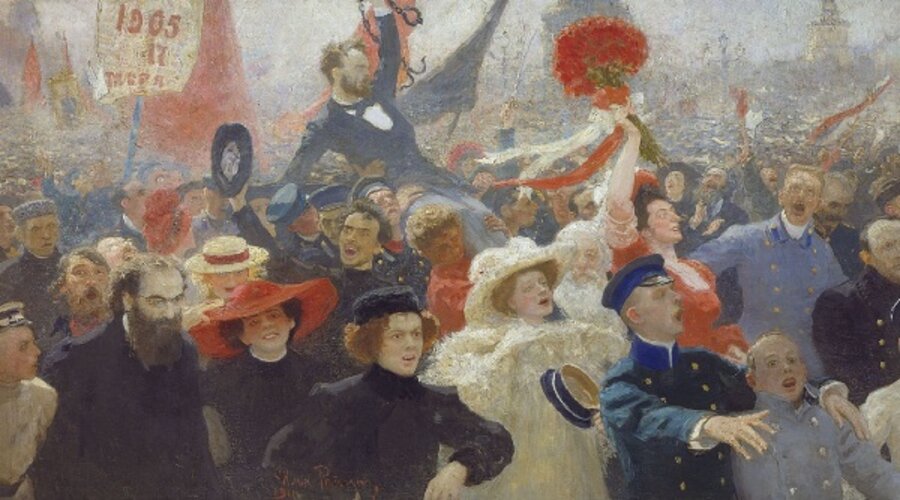In January 1905, Russian peasants and workers joined the Russian middle class to protest the oppressive Russian monarchy. The workers and peasants raised economic and political demands, and in the countryside peasant workers seized land and created a nationwide Peasant Union.
When a peaceful march in St. Petersburg devolved into a bloody confrontation with Russian troops killing more than 100 marchers (perhaps a few thousand, according to some sources), it was given the name “Bloody Sunday.” This event spurred more than 400,000 workers in Russian Poland to join the strike, and the labor stoppages quickly spread throughout the Russian empire, generating self-organized councils called "soviets" in the process. Though originally focused on labor rights like land use, the creation of an eight-hour workday, and improved working conditions, the demands became increasingly political. Protesters called for freedom of speech, the right to form political parties, and an elected parliament.
“What was meant to be a simple manifestation of economical discontent grew up, invaded all trades, spread to St. Petersburg, then all over Russia, and took the character of such an imposing revolutionary manifestation that autocracy had to capitulate before it,” Russian anarchist Peter Kropotkin wrote in 1914.
Czar Nicholas II capitulated, allowing the establishment of an elected parliament. But he would dissolve it two years later, which brought the revolution to an end.
One of the groups active during that period was the Bolshevik faction of the Marxist Russian Social Democratic Labour Party, led by Vladimir Lenin, who would go on to lead the successful Bolshevik revolution of 1917 and set Russia on a dramatically new path as a communist state.





